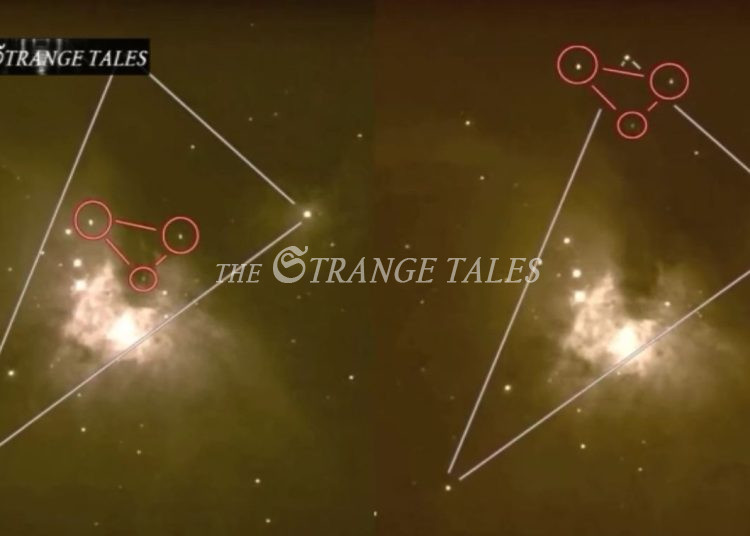The scientific world is extremely divided on a video that was posted online that appears to show many UFOs in the Orion Nebula.
A sky watcher was photographing the Orion Nebula on November 14, 2021, when mysterious formations and what may have been an extraterrestrial mothership in cylinder form passed through it.

It may be seen in the constellation of Orion, not far from the Milky Way. One of the brightest nebulae in the night sky that can be seen with the unaided eye. a cloud of ionized gases, including dust made of helium and hydrogen.
Additional images from subsequent years depict a number of additional enormous (often cylinder-shaped) UFOs flying over the Orion Nebula M42.

Is the movie of the UFO fleet, which includes other images, evidence that these enormous extraterrestrial ships are real?
The individual who used his telescopes to aim at the limitless universe on Earth accomplished something interesting.
According to the astronomer, he was gathering data on M42, the Orion nebula, and just as he was about to properly focus his telescope, he saw what can be seen in the video (below).

This material is intriguing, so let’s take a thorough look at these pictures from the movie and make our own judgments.
NOTE:
An enormous gas and dust cloud known as the Orion Nebula can be found in the constellation of Orion.
It is one of the night sky’s brightest and most visible nebulae, and it can be viewed with the unaided eye.
The nebula is thought to be a location of active star formation and is situated 1,344 light-years away from Earth.
The Orion Nebula is a type of nebula known as a “diffuse nebula,” which is a cloud of gas that is not held together by gravity. Instead, the huge stars that are forming within of it are pulling it together with their immense gravitational pull.
These stars are in charge of ionizing the nebula’s gas, which gives it its distinctive red and blue hue.

Numerous newborn stars, including several huge stars collectively known as the “Trapezium,” are found in the Orion Nebula, an active zone of star formation.
The surrounding gas fluoresces as a result of the Trapezium stars’ intense heat and high UV radiation emissions.
The nebula’s star creation is likewise fueled by this radiation. Both amateur and professional astronomers enjoy observing the Orion Nebula, and it has received a lot of attention recently.
Many information regarding the nebula’s structure and the star formation process going place inside of it have been discovered from observations made with the Hubble Space Telescope and other instruments.
The Orion Nebula is a fantastic location to learn about how planetary systems form.
The nebula contains a number of protoplanetary disks, which are hypothesized to be the precursors to planets.
These disks, which are assumed to be the forerunners of planetary systems like our own, are created from the debris that surrounds young stars.
Additionally, in clear skies, it’s a terrific site to observe with a telescope as well as with the unaided eye.






